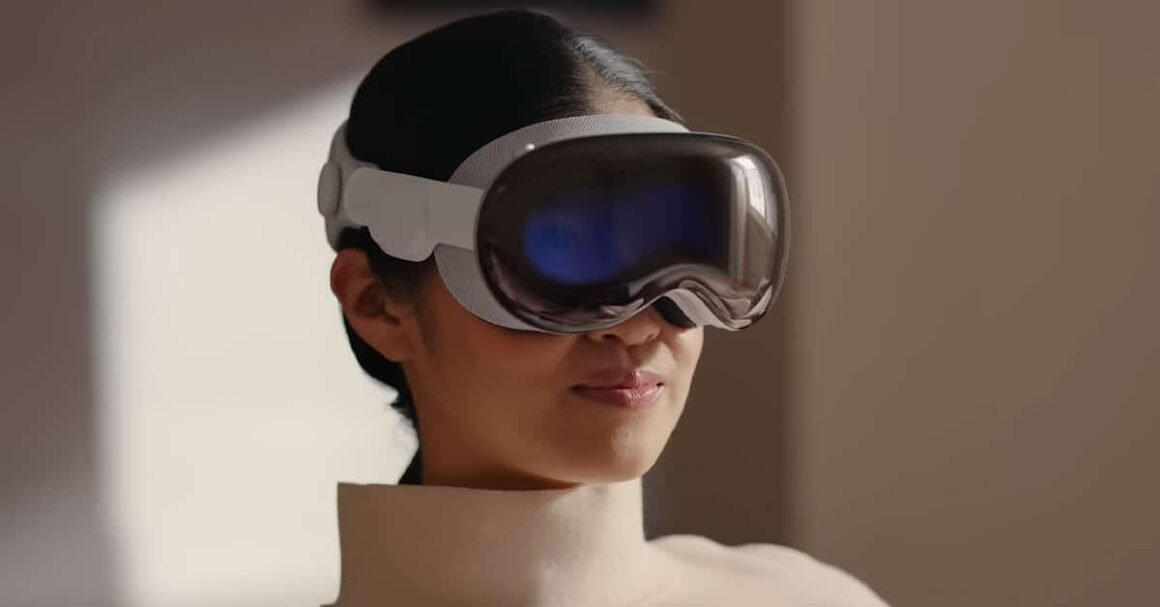Apple has once again stepped into the spotlight of next-generation technology with the release of the Apple Vision Pro (M5)—its most advanced spatial computing headset yet. Announced at a high-profile Cupertino event, the new model represents more than an incremental update; it’s a redefinition of how humans interact with digital environments.
While the original Vision Pro established Apple’s dominance in the mixed-reality space, the M5 version refines nearly every core aspect—display quality, performance, comfort, and ecosystem integration. But with a $3,199 price tag and mounting competition from Meta, Samsung, and Sony, Apple faces a new challenge: turning groundbreaking technology into a mainstream experience.
A Leap in Visual Fidelity
At the heart of the Vision Pro M5 is Apple’s dual 8K micro-OLED display system, delivering what the company calls “retina-level immersion.” The resolution jump is not just a technical upgrade—it’s a psychological one. Testers describe the visual experience as “indistinguishable from reality,” with zero visible pixels and ultra-responsive depth rendering.
Apple engineers have incorporated dynamic eye-adaptive contrast, a feature that adjusts lighting and color balance based on where the user’s gaze naturally falls. This gives digital elements a near-tangible quality, blurring the line between physical and virtual space.
In early reviews, tech analysts called the M5 “a visual masterpiece,” comparing it to the leap from standard HD to 4K television. But the real innovation lies in real-time spatial compositing, which seamlessly blends digital objects into physical surroundings with unprecedented accuracy.
Powered by the M5 Chip: More Than Just Processing Speed
The Vision Pro M5 runs on Apple’s newly designed M5 silicon chip, built specifically for spatial computing. Unlike its predecessor, the M5 integrates GPU, CPU, and neural engines into a single architecture optimized for real-time mixed-reality rendering.
Performance benchmarks indicate a 30% increase in graphics throughput and 40% better energy efficiency compared to the previous M3-based model. The headset also introduces thermal adaptive cooling, which minimizes fan noise during heavy application use—an essential upgrade for immersive environments and enterprise applications.
Developers have already reported that the new chip enables more lifelike avatars, faster AR layering, and smoother transitions between environments. The result is a headset that feels less like a device and more like a natural extension of the user’s senses.
Ergonomics and Comfort: The Subtle Revolution
Apple has clearly listened to user feedback from the first Vision Pro release. The M5 is 18% lighter, made from an advanced carbon-aluminum composite. The new “aero-balance” strap design distributes weight evenly across the head, reducing fatigue during extended sessions.
Even the audio experience has evolved. The M5 uses directional spatial audio mapping, which changes sound position relative to the user’s movement. Combined with AI-powered ambient cancellation, it creates a convincing sense of “being there,” whether inside a 3D design studio or a cinematic VR film.
These refinements transform the headset from a futuristic novelty into a functional workspace. Apple’s goal is clear: make extended wear comfortable enough to replace laptops and monitors for professional tasks.

Integration Into the Apple Ecosystem
What makes the Vision Pro M5 uniquely “Apple” is its seamless integration with the broader ecosystem. Users can now extend their Mac display into spatial space, manage multiple apps in floating 3D windows, and even take FaceTime calls in immersive mode using lifelike “Persona 2.0” avatars.
This deep connectivity strengthens Apple’s ecosystem lock-in strategy. By positioning the Vision Pro as a hybrid productivity and entertainment device, the company isn’t just selling hardware—it’s building the next layer of computing infrastructure.
“Apple isn’t trying to sell headsets,” said analyst Robert Wu of IDC Asia-Pacific. “It’s trying to redefine what a personal computer looks like in the 2030s.”
Enterprise and Developer Expansion
Apple is aggressively courting enterprise clients for the M5. Partnerships with Adobe, Autodesk, and Siemens highlight its push into professional design, simulation, and training. The headset’s ability to visualize 3D data models in life-size resolution has drawn interest from architecture and medical industries.
Developers, meanwhile, are embracing the expanded visionOS 2.0 SDK, which allows for deeper integration of AI tools, real-time collaboration, and enhanced gesture recognition. Early reports suggest that app creation for spatial productivity tools has tripled since the M5 announcement.
“The enterprise angle is where Apple will find staying power,” said Marisa Kwon, a technology consultant at Gartner. “Entertainment will draw attention, but business adoption will sustain growth.”
The Market Challenge
Despite its technical brilliance, Apple’s biggest hurdle remains accessibility. At over $3,000, the Vision Pro M5 remains a luxury product in an emerging category. Meta’s Quest 4, priced under $600, dominates mass-market adoption, though at the expense of fidelity and integration.
However, Apple’s strategy has rarely been about affordability—it’s about anchoring aspiration. Much like the original iPhone or MacBook Pro, the M5 may serve as a proof of concept that gradually drives ecosystem adoption and downstream innovation.
Consumer reactions are cautiously optimistic. Early adopters praise its immersion and realism, but others question whether it solves a problem or simply creates a new kind of digital dependency.
The Bigger Picture: Redefining the Human-Computer Interface
Beyond the specs, the Vision Pro M5 is part of Apple’s broader vision to redefine how humans engage with digital information. Its combination of spatial computing, AI-assisted environment mapping, and gesture-driven control hints at a future where screens disappear and experiences become ambient.
In this vision, computing isn’t confined to devices—it’s woven into perception itself. “This is the foundation of the post-smartphone era,” said Wu. “Apple is building the operating system for spatial reality.”
Conclusion
The Apple Vision Pro M5 isn’t just a new gadget—it’s a statement about where the company, and perhaps computing itself, is headed. With its unmatched visual fidelity, deep ecosystem integration, and enterprise-grade potential, the M5 sets a new standard for spatial technology.
Yet, it also raises deeper questions about access, dependence, and the meaning of “reality” in an increasingly digital age. Apple has once again proven its ability to shape the future—but whether the world is ready to live inside it remains to be seen.

